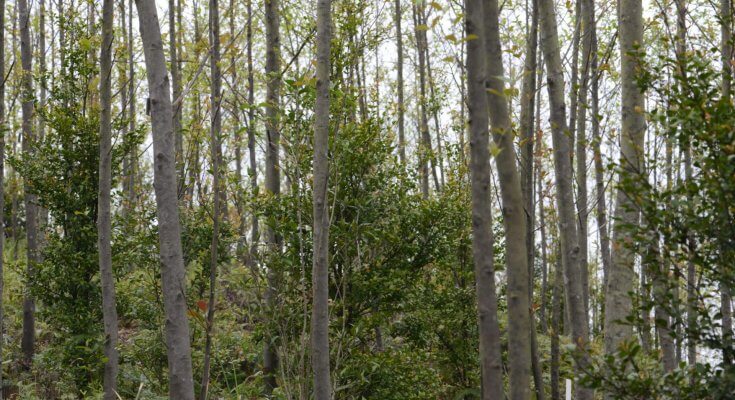Authors: Michael Staab, Stefanie Pietsch, Haoru Yan, Nico Blüthgen, Anpeng Cheng, Yi Li, Naili Zhang, Keping Ma, Xiaojuan Liu
Ecology, July 2023, Volume 104, Issue 7, e4057, https://doi.org/10.1002/ecy.4057
Summary: Extrafloral nectaries (EFNs) are nectar glands outside plant flowers. By providing a sip of notorious and sweet liquid, plants with EFNs attract ants and other natural enemies that may reduce herbivore loads. Such ‘food-for-protection’ mutualisms have been studied extensively for plants with EFNs. However, it was unknown whether this mutualistic association also benefits neighboring plants that do not produce extrafloral nectar. We now show that trees neighboring EFN trees have more ants and fewer herbivores compared to conspecific control trees without EFN-bearing neighbors. Concurrently with the changes in the arthropod community, the composition of leaf traits potentially related to plant defense shifted. These novel results suggest that when trees without EFNs benefit from lower herbivore loads as a result of predatory ants spilling over from EFN-bearing neighbors, resource allocation into defense could be lowered, which would free resources for growth.
Conclusion: Facilitation between plant species, an important mechanism behind biodiversity-ecosystem functioning relations, can be driven by mutualistic predators that enhance conditions for plants without defense mutualisms. As plants with EFNs are common in tropical and subtropical floras, the revealed mechanisms may be widespread and functionally important. For example, adding EFN species to species pools in reforestation and restoration projects could foster herbivore control, growth and other ecosystem functions.
